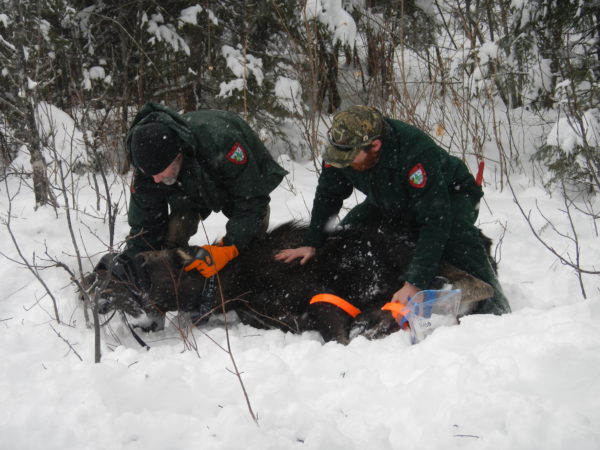
Early last week, helicopter crews finished up work capturing and radio-collaring moose in two of the state’s Wildlife Management Districts, adding 83 more moose to a pair of study groups in western and northern Maine.
Over time, those moose — along with the others that were previously captured and are already providing valuable data — will help biologists better understand the survival rate among both adult female moose and their newborn calves.
One thing that has become exceedingly clear over the four previous years of gathering data on the state’s western Maine herd around Moosehead Lake: The winter tick is a particular culprit in the lives of young moose, killing more than 50 percent of the study group calves on an annual basis.
Moose, especially young moose, with tick loads in the tens of thousands, can lose enough blood that they become anemic and die.
The study, in conjunction with work being done in New Hampshire and Vermont, has been set up in part to determine whether ticks play similar or different roles at different degrees of latitude. For instance, do ticks kill fewer moose the farther north you go because the ticks themselves struggle to survive in the cold weather?
The County is pleased to feature content from our sister company, Bangor Daily News. To read the rest of “Researchers study moose calf survival rates,” an article by contributing Bangor Daily News staff writer John Holyoke, please follow this link to the BDN online.







